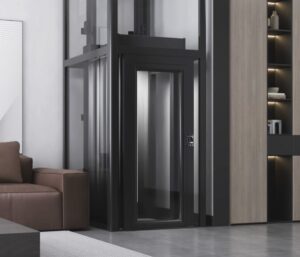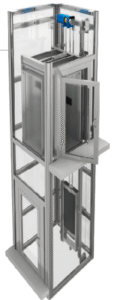Landing a compact hydraulic or electric lift into a family home enhances accessibility and is no longer just the domain of Hollywood mansions or futuristic builds. All across New Zealand, small house elevators are quietly changing what home life looks like—making multi-storey bungalows, townhouses, small homes, and hillside retreats practical for everyone, regardless of age or mobility. With this change comes a wave of questions around health and safety, reliability, building performance, regulations, the building process, building codes, consumer protection, and compliance. How do these sleek residential lifts actually measure up when it comes to New Zealand’s exacting standards?
Peace of Mind Riding with Technology
Safety isn’t up for negotiation, and the emotional stakes involved in moving people within a home—sometimes children, grandparents, or visitors—are naturally high. New Zealand homes, including small homes, now have access to elevator technology that has matured well beyond basic up-and-down functionality.
Modern residential lifts are engineered to anticipate and mitigate everyday risks:
- Automatic emergency lowering during a power cut, preventing entrapment.
- Obstruction sensors to detect anything or anyone outside the norm.
- Overspeed governors to halt uncontrolled carriage travel.
- Mechanical and electrical door locks stopping doors from opening between floors.
- Cabin and shaft communication systems for immediate assistance.

Advanced features like infrared door protection, soft starts and stops, and isolation from electrical surges are routine, not luxuries. Many of these features are the direct result of years of international collaboration through standards agencies and regulations, as well as pressure from both engineers and caring homeowners.
Defining Safety: What the Standards Say
In New Zealand, residential elevators are subject to both national and local regulations to ensure compliance with safety standards. The foundation is the Building Code, specifically Clause D2: Mechanical Installations for Access. This sets broad requirements covering:
| Requirement | Description |
| Safe movement | Elevators must operate safely at all times |
| Robust construction | Materials and mechanisms must not fail in normal use |
| Reliable stopping | Accurate and secure floor alignment required |
| Emergency systems | Emergency alarms, communication, and lighting |
| Maintenance access | Regular service and inspection must be possible |
Beyond D2, referenced international standards such as ASME A17.1/CSA B44 and EN 81-41 provide detailed guidelines for platform lifts and home elevators. These are not mere suggestions—building consent authorities require proof of compliance. If a product cannot meet these, it simply won’t get sign-off from council inspection.
Local elevator companies work hand-in-hand with architects, engineers, and councils, often incorporating a seismic work programme to navigate the paperwork and practical installation hurdles. Trusted manufacturers, like Canny Elevator, supply certification documents, installation manuals, and evidence of testing—removing guesswork from the process.
A Closer Look at Small House Lift Designs
Today’s house elevators have shed their industrial roots. Engineering for domestic settings means thinking far beyond durability and load-bearing. The footprint is often compact, with shaft space and pit requirements tailored for retrofits and small homes with tight floor plans.
Safety in these smaller packages isn’t just about mechanical robustness, but about how the system interacts with the unique pressures of small homes, incorporating health and safety standards to manage a busy, sometimes chaotic household. For example:
- Single touch controls prevent accidental calls or misuse.
- Reduced shaft sizes keep children and pets from entering dangerous spaces.
- Quiet, low-vibration operation incorporates additional control layers to prevent jolts.
- Optional key switch operation can restrict use to authorised family members, reducing risk for vulnerable residents.
Here’s a quick comparison between modern small lifts and legacy models:
| Feature | Legacy Home Lifts | Modern Small Lifts |
| Safety Mechanisms | Basic interlocks | Multi-level, sensor-based |
| Power Failure Handling | Manual release only | Automatic leveling/lowering |
| Control Precision | Manual, imprecise | Programmable logic, smooth |
| Door Operation | Mechanical, heavy | Auto, soft-close |
| Emergency Communication | Absent or manual alarm | Two-way intercom, auto alert |
Clear Benefits, but No Skimping on Responsibility
Bringing elevator technology into a home naturally raises expectations around independence and future-proofing one’s investment. Ageing-in-place, multigenerational families, and accessibility in home design are now mainstream considerations.
“Is it really safer than stairs?” is a fair query. Stairs—especially when wet, dimly lit, or rushed—are a well-known source of home injuries. While lifts remove this particular risk, poor install, misuse, or neglect can introduce others. That’s why both product quality and professional installation matter. No trusted lift installer will cut corners or sign off a shortcut during the building process without ensuring all regulations, compliance, and building consent requirements are met.
Annual servicing, compliance checks, inspection, and inclusion of a seismic work programme, as required by building codes and regulations, are all legal and practical musts, reinforcing commitments to consumer protection and improving overall building performance. A neglected lift, no matter how well designed, will eventually develop faults. Families retain ultimate responsibility for maintenance, just as with any major appliance, but reputable suppliers set in place reminders, logs, and service contracts to lighten the load.
Who Can Install, and What Should You Check?
Home elevators must be installed by trained, certified professionals. Attempting DIY or hiring a generalist runs afoul of New Zealand regulations—potentially putting lives at risk and voiding insurance along the way.
When assessing a residential elevator company, these are some smart questions to ask:
- Is the product specifically tested to New Zealand or international residential lift standards?
- Will I receive formal documentation for compliance with building codes and regulations, and how does the elevator affect overall building performance?
- What ongoing service, inspection, and emergency support do you offer, and is local backup available?
- Can your product be safely installed, considering health and safety standards, given my home’s construction and available space?
- How does the lift design protect children, pets, and visitors?
The Service Factor: Local Support
Internationally manufactured lifts like Canny Elevator‘s are widespread, and global backing can be an advantage, but the local support should inspire just as much confidence. A New Zealand-based distributor or technician provides a safety net that’s more than just a phone number. Fast replacements, targeted troubleshooting, and knowledge of unique regional housing preferences all make future maintenance less stressful.
Local compliance also reveals another benefit: a focus on New Zealand’s distinctive seismic risk and power supply characteristics, integrating considerations from the seismic work programme. Earthquakes, remote locations, and regional power interruptions are taken into account with features like seismic sensors and battery backup options.
Why Homeowners Are Making the Leap
There’s an equally practical and aspirational side to putting a small elevator in small homes. On the everyday level, it alleviates back-and-forth struggles with groceries, prams, or heavy items. On the emotional level, it signals a commitment to making life comfortable and open to everyone in the family, regardless of stage or circumstance.
New Zealand’s ageing population, along with a clear desire for homes that can “grow” with residents, is making lifts not just a perk, but often a wise investment decision, ensuring compliance with safety and accessibility standards. Increasing market competition has improved affordability while tightening safety regulations, standards, and installation quality.
The Innovations on the Horizon
The rise of small house elevators, especially in small homes, isn’t plateauing. Voice-activated controls, phone app integration, and improved low-carbon drive systems are coming online. Green technology is creeping into the mix too, with models requiring less energy or even recapturing power as they descend.

From the outside, these elevators blend into the architecture, with wall, glass, or even art panel finishes as optional extras. There’s no need to compromise on the look and feel of a home to create accessibility.
Making the Right Choice
A home lift can be a big decision, both financially and emotionally. It brings daily ease and future flexibility—but the key is in diligence. Ensuring compliance with regulations and national standards, choosing reputable installers, integrating insights from the building process, prioritizing consumer protection, and keeping maintenance schedules to heart are all part of making sure this modern convenience is truly an asset.
A future where families live independently, and homes adapt as needs shift, is firmly within reach. And with the right information and support, these lifts do more than move between floors—they move households towards safer, more welcoming homes for all.
